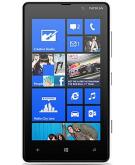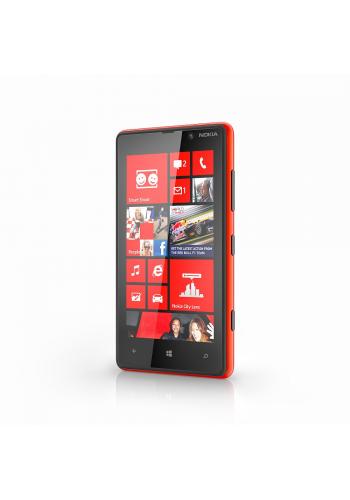We have selected all the specifications of the Nokia Lumia 820 and have listed them below.
The Nokia Lumia 820 was launched in October 2012. The smartphone comes with a 4,3 inch screen with a resolution of 480 x 800 pixels.
This Nokia is powered by a Qualcomm Snapdragon S4 chip with a 1,5 GHz Dual-Core processor. This chipset has a dual-core processor with 1024 MB RAM. With a thickness of 10 millimeters, this device feels somewhat thick. This phone weighs 160 grams.
The Lumia 820 has a 8 megapixel camera, You can also use the 0,3 megapixel selfie camera for video calling, for example.
Pros
- 8 megapixel camera
- dual-core processor
- One of the newest operating systems: Windows Phone 8
- HSPA+, LTE support for super fast internet
- This phone can be charged wirelessly
Negatives
- With a 1650 mAh battery you may have to recharge in between
Call & data functions
The Nokia Lumia 820 supports various networks. with which you can use the fast LTE network. The speed of LTE is perfect for intensive use of internet on the road where the speed does not differ much from home. Please note that it is very fast and you do not take out a small data plan, because the data is used up before you realize it. You can also connect via WiFi at home or at the office.
Memory and connection options
The Nokia Lumia 820 has 1024 MB of RAM (1 GB) . Expandable memory: microSD up to 32 GB. There is a USB connection, you can use this to exchange data with your laptop or to charge your device. Connecting Bluetooth headsets or car kits is no problem.
Screen & operation
The phone is operated via the large 4,3 inch touchscreen.The Nokia Lumia 820 can display up to a 16 millions colors. This screen has a resolution of 480 x 800 pixels. With 217 pixels per inch, this High density screen is excellent and easy to read. There are screens with a larger resolution for sale.
Operating system
Windows Phone 8 is a mobile platform from Microsoft. The core of Windows Phone 8 is based on the stable previous versions. It means that this Windows Phone has a good foundation with regard to common networks, security, media, web browser technology and a common file system. This translates into better performance, more functions and new possibilities for app developers and hardware manufacturers to innovate faster. 






